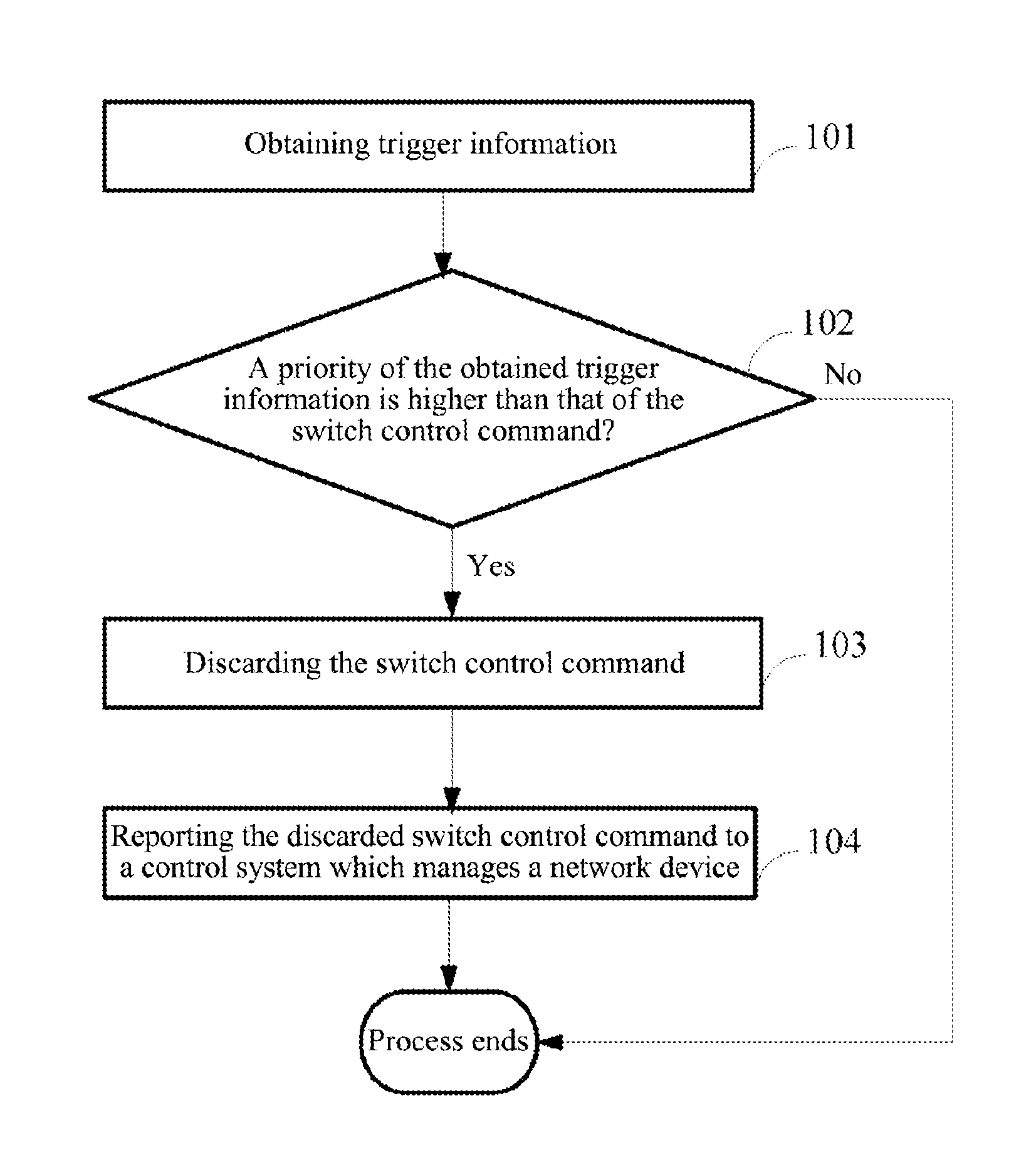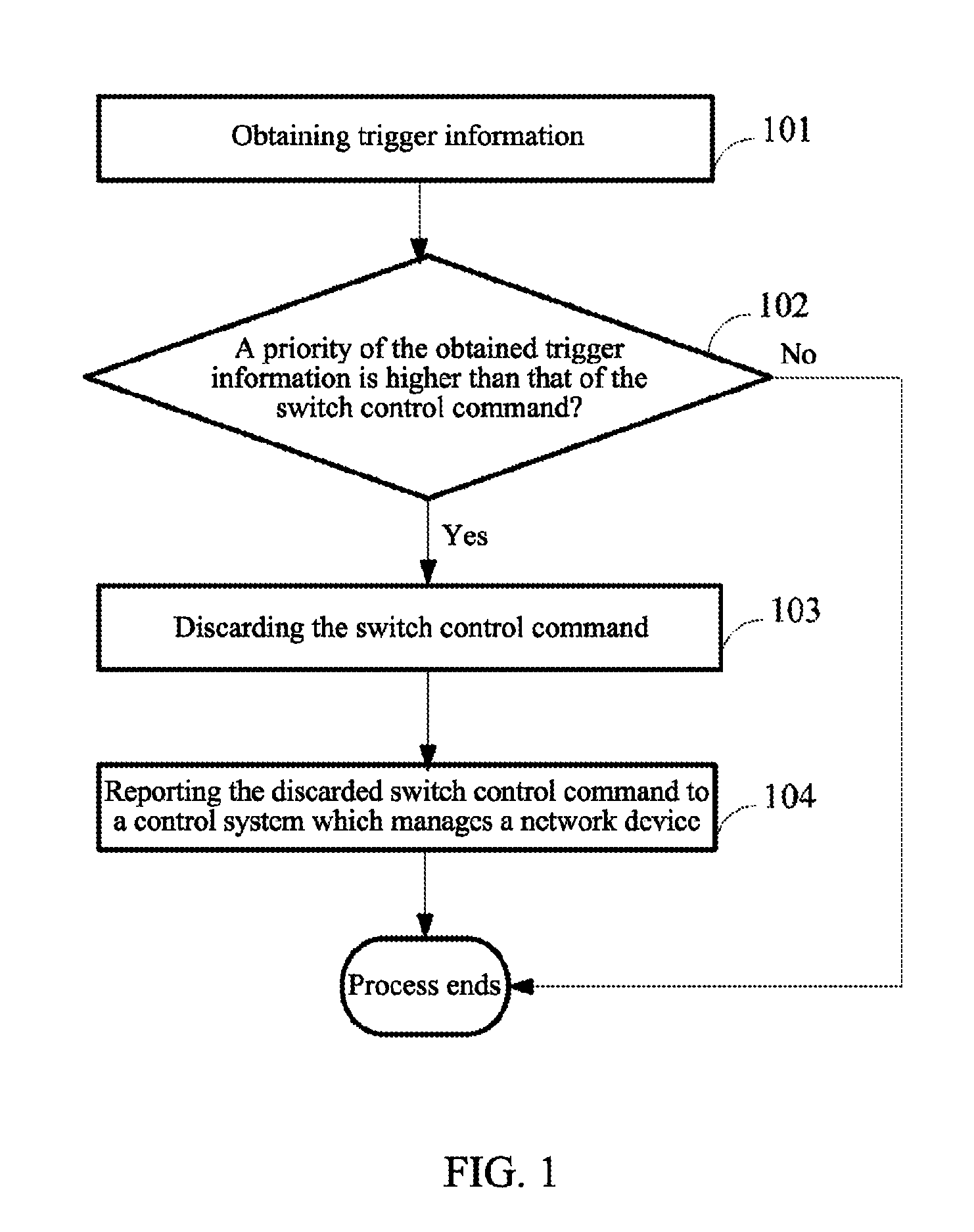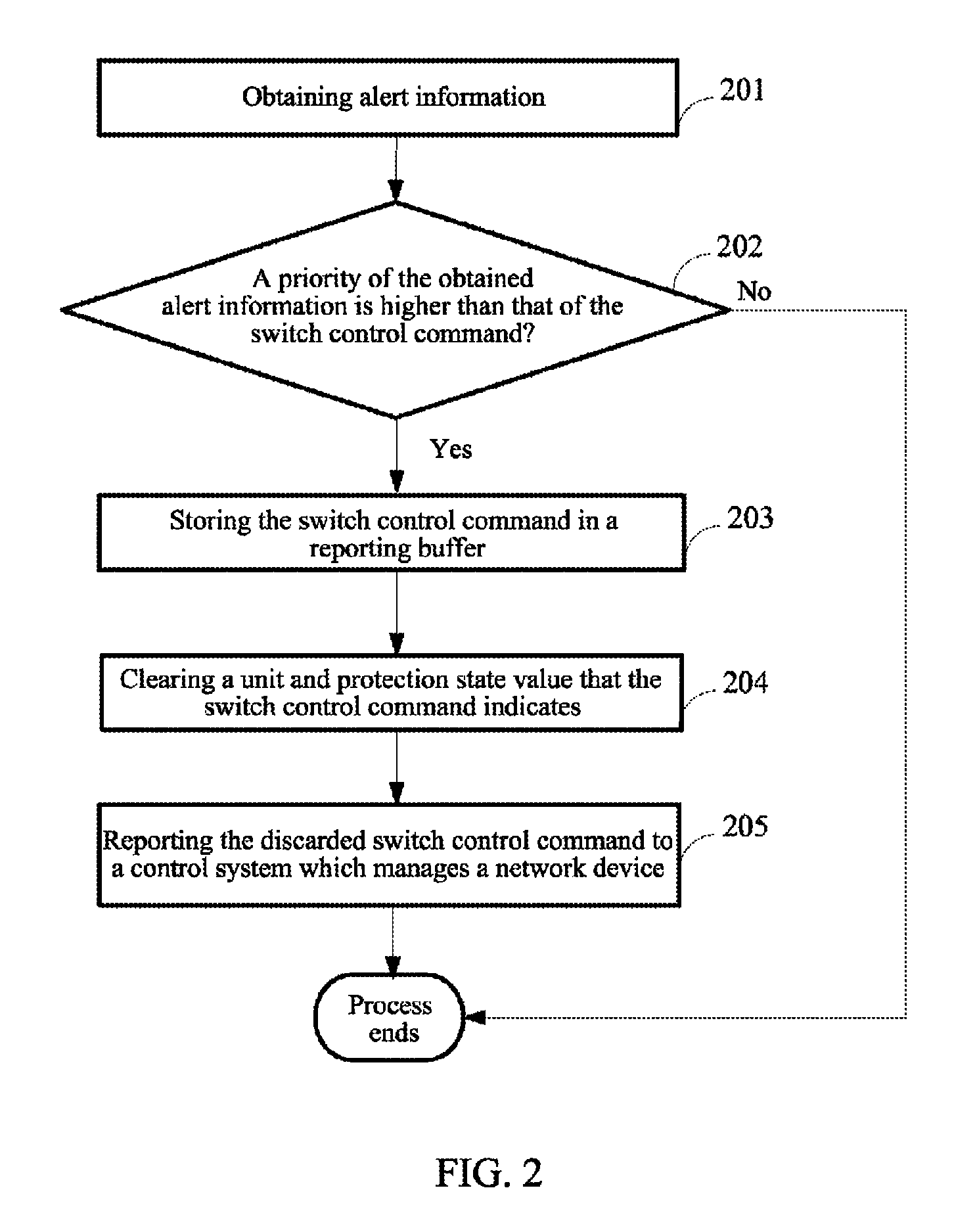Method and device for processing switching control command
a control command and switch technology, applied in the field of optical networks, can solve the problems of inability to maintain data consistency between the network device and the network manager, and the network manager is usually unable to know various trigger information of the protocol in real-time, so as to enhance data consistency
- Summary
- Abstract
- Description
- Claims
- Application Information
AI Technical Summary
Benefits of technology
Problems solved by technology
Method used
Image
Examples
first embodiment
[0035]In the first embodiment, trigger information is alert information generated by a network device. The network device stores priorities of various trigger information defined by the APS protocol, and some of storage units act as reporting buffers. Referring to FIG. 2, a particular process of processing a switch control command is shown and comprises the following steps.
[0036]Step 201: the alert information is obtained. Herein the alert information may be one of Signal Degraded (SD) and Signal Failure (SF).
[0037]Step 202: a priority of the obtained alert information is compared with that of the switch control command. When the priority of the obtained alert information is higher than that of the switch control command, step 203 is performed; otherwise, the process ends.
[0038]Herein when the alert information is the SD and the switch control command is Manual Switch (MS) or exercise (EXER), the priority of the SD may be known to be higher than that of the MS or EXER based on the p...
second embodiment
[0043]In the second embodiment, trigger information is APS information sent by a remote node and received by a network device in the bidirectional switching. Particularly, the APS information is APS byte information. The network device stores priorities of various trigger information defined by the APS protocol, and some of storage units act as reporting buffers. Referring to FIG. 3, a particular process of processing a switch control command is shown and comprises the following steps.
[0044]Step 301: the received APS byte information is obtained.
[0045]The APS byte information may contain various APS requests, which represent switching request states of a remote node and may be switch control commands, such as EXER, MS, FS, or Locking (LO).
[0046]Step 302: the legality of the APS byte information is verified. If the APS byte information is legal, step 303 is performed, otherwise, the process ends. Herein, it is verified by taking a value from the APS byte information, as defined in th...
third embodiment
[0055]In the third embodiment, trigger information is a switch control command sent by a network manager and received by a network device. The network device stores priorities of various trigger information defined by the APS protocol, and some of storage units act as reporting buffers. Referring to FIG. 4, a particular process of processing a switch control command is shown and comprises the following steps.
[0056]Step 401: the received switch control command is obtained.
[0057]Herein the received switch control command may be one of a CLEAR command, a LO command, an a FS command, a MS command and an EXER command.
[0058]Step 402: parameter verification is performed on the received switch control command.
[0059]Step 403 is performed after the verification is passed, otherwise, the process ends. The parameter verification comprises whether the sent switch control command is a legal command or a command identifiable by the network device, or whether the position of the switch control comm...
PUM
 Login to View More
Login to View More Abstract
Description
Claims
Application Information
 Login to View More
Login to View More - R&D
- Intellectual Property
- Life Sciences
- Materials
- Tech Scout
- Unparalleled Data Quality
- Higher Quality Content
- 60% Fewer Hallucinations
Browse by: Latest US Patents, China's latest patents, Technical Efficacy Thesaurus, Application Domain, Technology Topic, Popular Technical Reports.
© 2025 PatSnap. All rights reserved.Legal|Privacy policy|Modern Slavery Act Transparency Statement|Sitemap|About US| Contact US: help@patsnap.com



